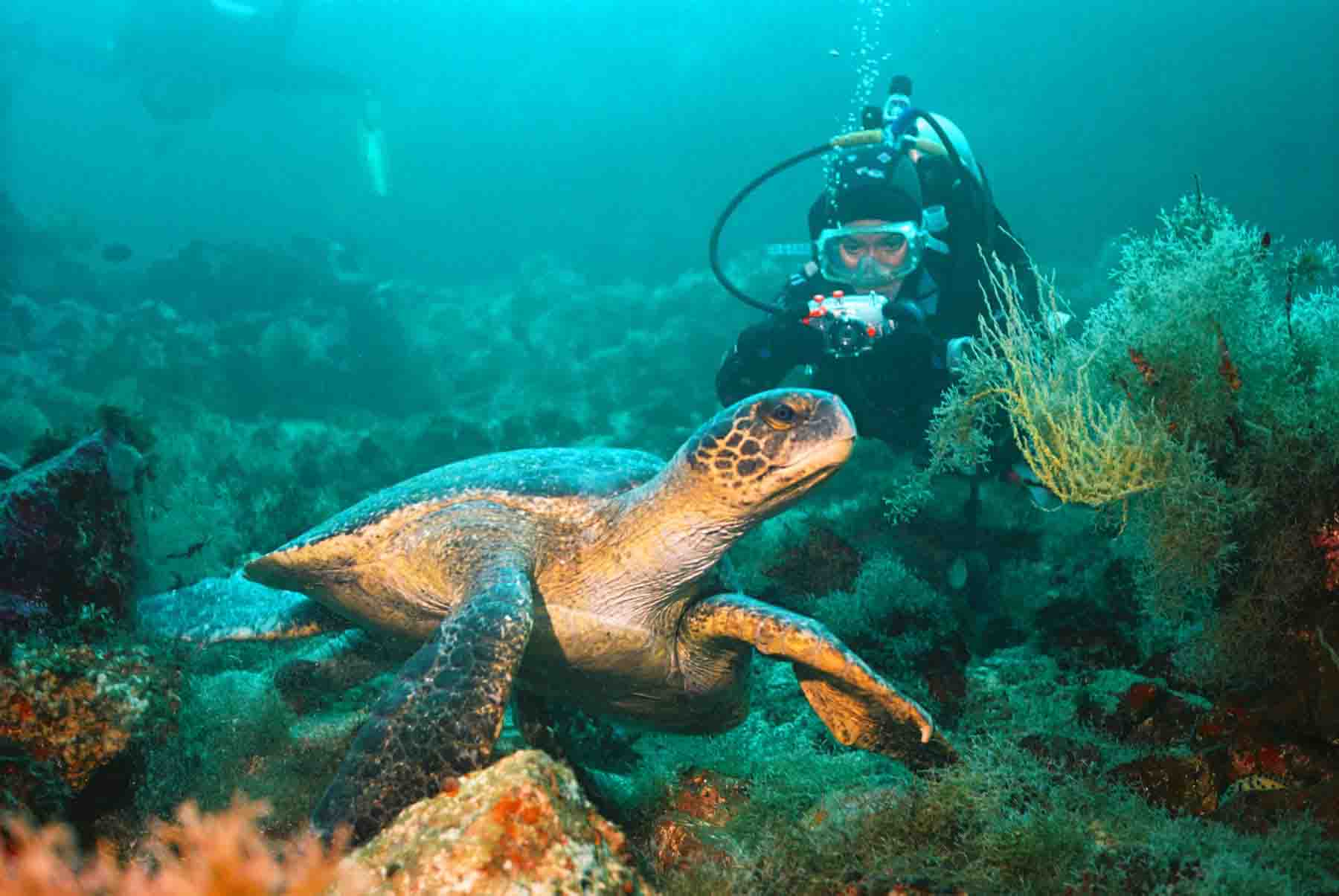Learn more about Española
About, which is 4.5 million years old is the oldest. It has completed all development processes. The result of an uplifting is heavily eroded and on the verge of sinking and mass loss. It is located in the archipelago's outer south-east corner.
One the smallest, but most colorful, islands. You'll find land and hybrid iguana colonies, sea lion colonies and many birds flying by the cliffs.
It is uninhabited.
This island was home to the first flora and fauna arrivals. It is also likely that it was the ancestral home of many species that now inhabit other islands. The Española Mockingbird is endemic to this island. This is the only Marine Iguana community that stays reddish-green throughout the year.
This island is the only place where the Galapagos Waved Albatross can nest.Thanks to the Humboldt current's cold waters and the upwelling caused by it, the endemic bird nests on the flat ground of the island. This is the beginning of a long-lasting love story . They breed between April and December. This is the largest and most endangered colony species of birds in the world, with approximately thirty thousand individuals.
There are approximately 1500 tortoises living there today. A population of Tortoises has been repatriated by the Galapagos National park and Charles Darwin Station. 14 individuals were selected from the group that survived the introduction of rats to the eggs in the 1960s.
Española Highlights include Blue-footed Boobies courting and Waved Albatross courting. Also, Nazca Boobies colonies and nesting grounds.
Locator Map

Española Island Visitors' Sites
Punta Suarez
Espanola is located at the archipelago’s southeast tip. It is home to the oldest island in the Archipelago, the Espanola mockingbird and around 12,000 pair of waved albatrosses.
Sea lion colonies, marine iguanas of the highest color, lava Lizards and beautiful scenery at the blowhole, where water shoots 75 feet (23 m), up into the air, will be on display to passengers.
Espanola is a spectacular setting among the blackcliffs and the rolling and crashing waves below. The elaborate courtship rituals performed by albatross birds that mate for the rest of their lives make Espanola an unforgettable highlight of your trip.

It is also interesting because of its geographic features. The trail consists of a transitional zone of vegetation that is completely dry to semi-arid, with a lot of thorny plants.
Gardner Bay
Gardner Bay is located on Espanola island and consists of an extensive beach with whitish coralline, sand, and several colonies of Galapagos Sea Lions.
We can also see the endangered mockingbird Espanola in this area, often in small groups, defending their territory.
It is recommended to snorkel around the small semi-submerged tuff cone that lies in front of the beach. We could see sea lions, rays and reef white-tipped sharks in the area.
It is a day of sun, beach, snorkeling, and kayaking.
You can see blue-footed boobies and marine iguanas at certain points along the shoreline. There are also small coastal birds, such as Sally light-foot crabs and wandering tattlers.

Highlights A beautiful, relaxing beach of white sandy beaches with colonies, Hood mockingbirds and lava lizards. A small island is located in front of the beach. This is a great spot to snorkel among sea turtles and marine iguanas. You will also see lava lizards, zayapas and colorful Sally lightfooted Crabs. Snorkelers are often able to spot many Galapagos marine species, including Creole fish and damsel fish as well as white-tipped reef sharks, Creole fish, Creole fish, Creole fish, parrotfish, and many others.